Strayed Lights Review
PC
A not-too-tough soulslike game with a gorgeous aesthetic, interesting central mechanic, and a dialogue-free narrative to explore.
Reviewed by LCLupus on Apr 25, 2023
Now and then a game like Strayed Lights comes along. This is the debut game of a company named Embers, and it tries to do a few new things with an established genre. Sure, it takes from some of the games in that genre, but it does so with a fresher perspective. There aren’t many games that tackle some of the ideas that this game tackles, and it also isn’t all that often that a game attempts to use some of the narrative techniques employed in this game.
At its most basic, Strayed Lights is a soul-like game. It does many of the things that you may expect from a souls-like game, and it is also rather challenging at points, but we’ll get to the specifics of that in time. However, it alters things to a considerable enough degree that using the game’s combat system requires some level of mental rewriting of the expectations you may have from a game like this.
Most Souls like games tend to copy the Soulsborne formula as laid out by the games referenced in that genre name, the From Software modern classics Dark Souls and Bloodborne. These games have the general formula that you are in a Metroidvania-style world in which new shortcuts and modes of transport can be opened up to you as you explore an open world with a lore-oriented narrative and a heavy focus on the exploration of that world while battling against enemies that typically need to be dodged, parried, and killed.

Now, Strayed Lights does all of that, but also alters things in a few ways that will be unfamiliar enough to Soulsborne fans that it should be an interesting ride. However, it should be forewarned that Strayed Lights is not that difficult a game. Or at least, it isn’t all that difficult compared to more traditional souls-like games. So, yes, it is difficult at points, but don’t expect a very tough battle through the world, and instead expect something quite new but also quite balanced, for the most part.
How about we look at the game itself? So, you open the game as a small creature made of light and you make your way through your first steps into a frightening world. It’s dark out there, but it’s also beautiful. You are immediately thrown into an allegorical world in which no dialogue is ever spoken and yet the narratives attached to the various characters you encounter are easy to understand, but we’ll get to the narrative specifics soon enough.
The basic gameplay involves a lot of exploring and a lot of fighting, and the exploring is perhaps best discussed first. There isn’t all that much to find in Strayed Lights. The game adopts a far more streamlined overall layout in which there are certain collectibles to find, but they aren’t all that prominent, and there are no real secrets to determine or special places to discover. Instead, the world is full of immediately useful items that you can find to aid in the growth of your character.
The collectibles you can find come in two main varieties: lore-based items and power-up orbs. The orbs are used to increase your level of energy, although energy is quite strangely explained and either not all that well implemented, or it just wasn’t explained well enough to make it understandable as to what it does. Either way, this particular collectible allows you to increase the capabilities of your character in general.
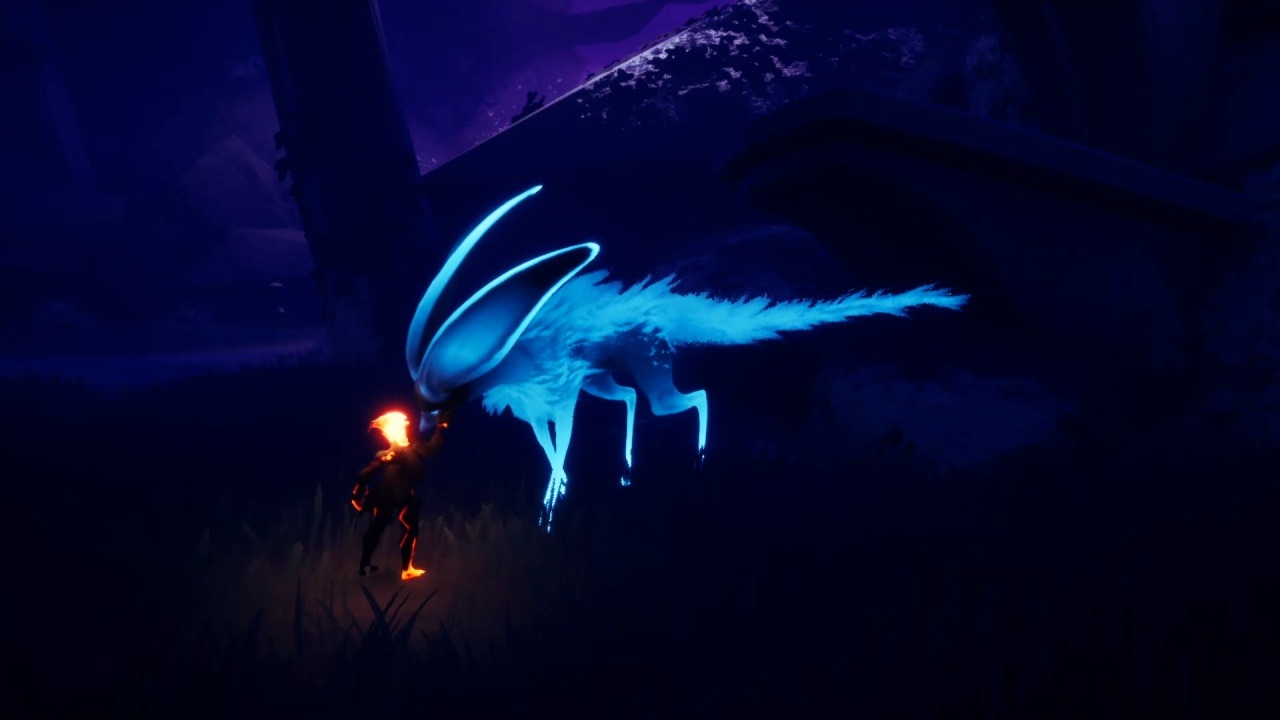
The lore-based items are not lore-oriented in and of themselves, but they instead allow you to unlock the lore from special terminals. There is not all that much more on display, and the lore is also actually only a collection of four still images. So, there isn’t much lore and, like the game’s lack of dialogue, there is no writing attached to the lore. In addition, you receive those energy collectibles whenever you unlock a piece of lore. This means that there is a mechanical reason to unlock the limited lore too.
Other than this, there are two forms of currency on display. One is acquired from beating regular enemies and the other is from defeating bosses. The specifics of these two types of combat will be explored soon enough, but these two collectible currencies are far more useful and functional than the two other types of collectible. These two different types of currency allow you to upgrade from two separate skill branches, one entails regular abilities like unlocking a stronger attack or increasing health. The other type, the one acquired from bosses, allows you to increase the abilities of your special attack.
Strayed Lights is not a game where you can acquire loads of points and upgrade your character in a multitude of ways; there are a very limited number of upgrades available. This all contributes to the more streamlined approach that this game has made use of, and it works well. The world may not have all that much in it, but it has enough to show you what it needs to show you.
Another great aspect of the world is that you can choose the order in which you do what needs to be done. There are always a number of paths you can follow from the two hub worlds that lead you down the road toward a boss fight, and you can go partway down one path and then decide to just do another one if you want. There is no need for manual backtracking as you can always leave the main world and enter your Inner World.

The Inner World is the realm between realms in Strayed Lights where you are able to upgrade and fast travel to the central hub or your location down whichever path you have traversed. This is another great aspect of the streamlined experience. You can go anywhere you need to go and the game will keep track of your progress. There is no need to backtrack. Simply follow each path until you find each boss and take them on.
We will discuss the specifics of the bosses soon enough, but before we can get into the combat, we need to look at the aesthetics of the game. Most games use entirely functional aesthetic designs. A game will have naturalistic forests or grey mechanical corridors to traverse. The aesthetic of most games is simply there to provide you with a visual representation of your journey, and there’s often nothing particularly interesting about it about the gameplay. The same is not true in Strayed Lights.
In this case, color plays an integral role in the gameplay. The environments all make use of dark backgrounds filled with purples and browns, and the air tends to have a neon hue to it all. It has a style somewhat reminiscent of games like A Story About My Uncle or Glitchhikers: The Spaces Between. Strayed Lights is nothing like either of these games in terms of gameplay, but in terms of visuals, there are some strong similarities there.
The darkened backgrounds juxtapose strongly against the depiction of the enemies that you face because each of the enemies uses a color-changing mechanic that forms the central combat loop. So, the stark colors of the backgrounds and the enemies allow the neon lights that form part of the mechanics of the game to come through as immensely readable.
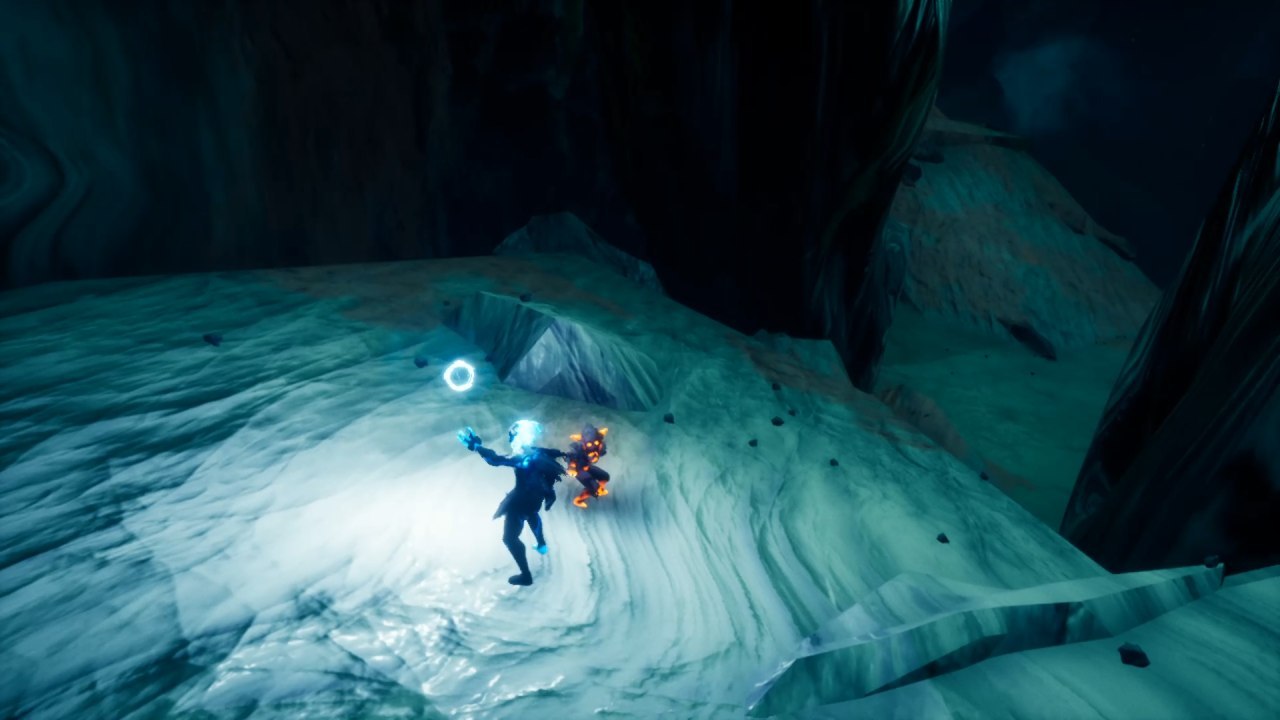
In fact, this neon aesthetic displays a bit of an issue that the game has when it doesn’t use these kinds of backgrounds. There is one part of the game where the world is full of vibrant and naturalistic colors as you traverse a section that is rather gorgeous but is also very garden-based. This section, because the backgrounds are now full of color, makes the mechanics far worse as a result. It becomes harder to read the switch from blue to orange when all the backgrounds are full of vibrant colors rather than darkened ones.
However, the developers clearly knew that they’d made some gorgeous visuals though because the game comes with its own camera mode built into the engine. Strayed Lights is very pretty, and a gorgeous game like this deserves to be seen as well as played. It is now time to discuss the combat though. We know what the game looks like, but why does the aesthetic presentation affect the game so much?
The reason that the aesthetic plays a role is because of that two-color system that has been mentioned, but let’s lay the groundwork here first. Strayed Lights is separated into two distinct modes of play: exploration mode and combat mode. While you’re exploring, there is no potential danger anywhere at all. Then you enter combat mode, and now things can kill you. You’ll never be suddenly hit by a combat encounter though as each enemy needs to be approached and essentially activated before any kind of combat begins.
Once combat begins, expect the same general principles as most soulslike games. Some enemies are fought while using a lock-on system and each of these enemies has very specific movesets, and you need to learn their moves so that you can best learn how to take them down. However, unlike many souls like games, there is no real punishment for failure. In fact, at the end of every combat encounter, the enemies never respawn, and you regain all your health and some of your ability points, which allow you to use your special attacks, whenever you win. So, Strayed Lights is not going for difficulty, but rather localized combat encounters that are then definitively concluded as soon as you’ve beaten them.
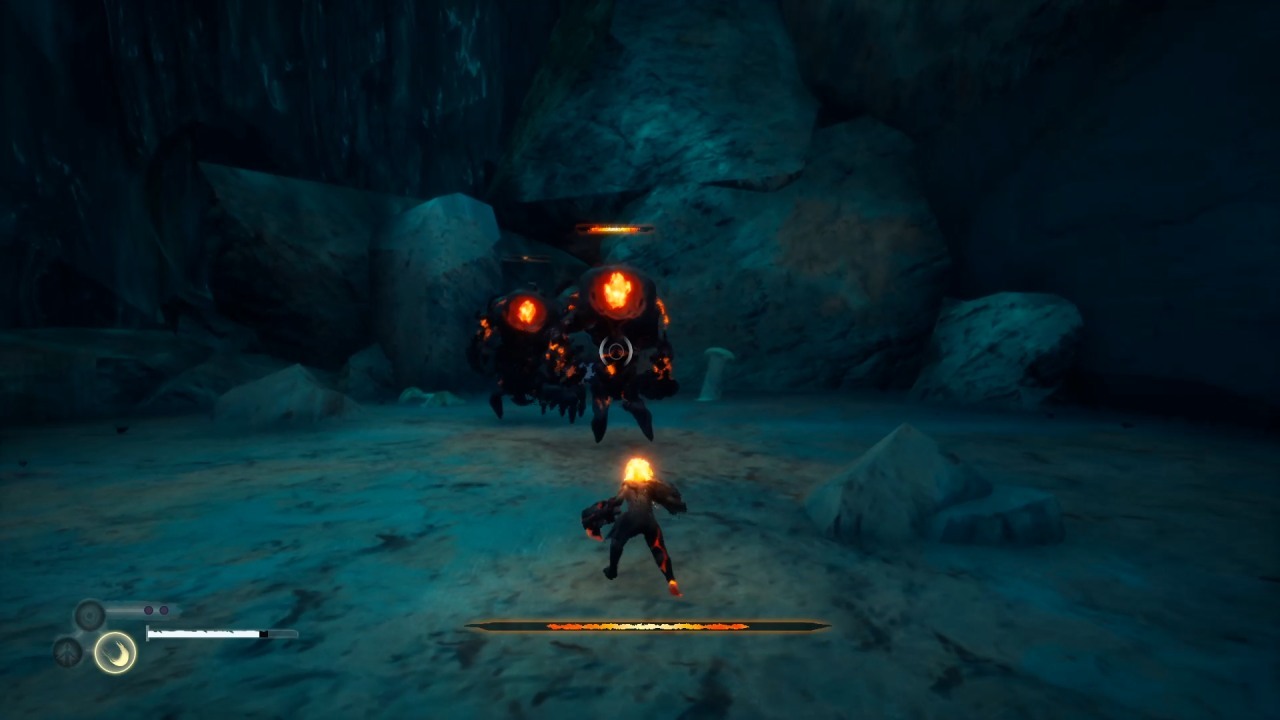
This also means that you can’t farm enemies for points. The game is generous enough with points that you won’t be struggling in that regard anyway. So, if you’ve wanted to try out a soulslike game, but they’re always too difficult, then Strayed Lights is worth your time. It does certainly get difficult at points, but it’s very lenient with you.
Now, the thing that makes the combat so different is the use of the two-color system. Both you and your enemies can switch colors. Enemies will switch their color between blue and orange, and you need to match yourself to their color if you want to parry them effectively. Parrying serves as the primary mode of combat in this game, and while parrying is integral to many soulslike games, Strayed Lights does not make it difficult to pull off.
Parrying is often one of the hardest things to master in a souls-like game, but Strayed Lights gives you a very wide window in which you can parry an enemy’s attack, but you need that extra window because the game is basically entirely comprised of parrying. Sure, there is a dodge, but it’s only really effective against the only other color in the game: purple. Whenever an enemy goes purple, they have to be dodged and cannot be parried.
There is also an attack, but it hardly deals any damage. This all goes into Strayed Lights’ narrative as you aren’t really meant to be killing those you encounter. Instead, you’re meant to be helping them. So, while hitting your enemies will reduce their health, their health is better reduced through parrying. When you’ve parried an enemy enough, they run out of what could be called their health, and then you unleash a finisher to end combat.
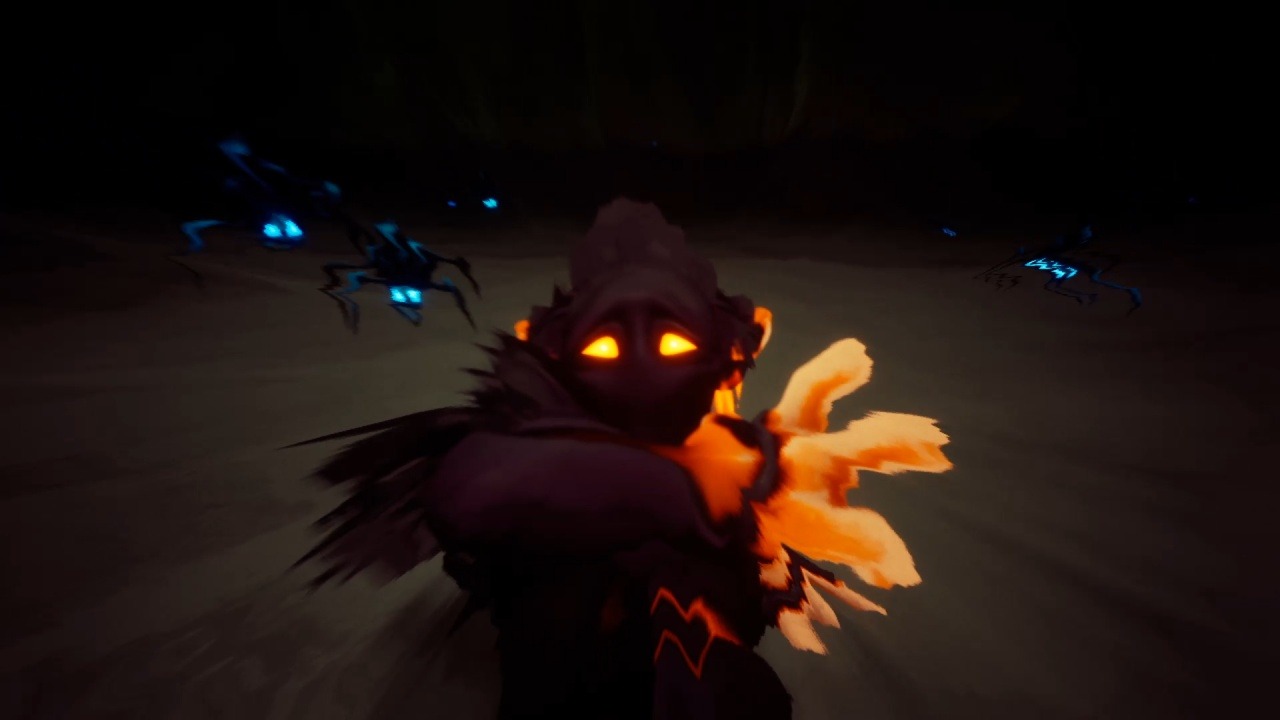
This is the biggest change that Strayed Lights makes to the soulslike formula. Dodging and attacking, aside from very specific instances, is not the best way to fight. To add to the less punishing nature of the game, whenever you parry, you recover health. You do not have any other means to recover health. There is no Estus Flash system in this game. You are incentivized to run straight up to your enemies and parry their every attack.
While the regular attack isn’t useful, the special attack is. Various special attacks can be unlocked in Strayed Lights. One of them pushes enemies back and does some damage, another freezes them for a while, and the last one allows you to negate the color-switching mechanic for a few seconds and simply parry any attack regardless of color, although this does not work with the purple attacks.
So, this is the basic combat in Strayed Lights. You need to constantly switch between two colors so that you can match your enemy. It takes quite a bit of getting used to, and it also means that you need to often switch between colors a second before an enemy hits you, and you need to parry on time on top of that. This means that there will be points where an enemy goes at you with blue, blue, orange, purple, and back to blue. So, you then need to switch to blue, parry twice, switch to orange and parry once, dodge the purple, and switch back to blue and parry. All of this will happen in the course of maybe five seconds.
Many of the regular enemies hit you slow enough that it can be easy to handle this, but some of the bosses smack you with intense combos that threaten to obliterate you if you don’t learn them properly. As has already been said, this takes some getting used to as you play. The early game can often jumble your mind as you always need to hit two buttons to parry any attack as one is for color switching and the other is for parrying. However, once you get into the groove of it, you’ll have a blast.

This doesn’t mean that Strayed Lights is always so nice and lenient with you. The combat is best based around fighting a single foe, so every now and then the game will throw two enemies at you at once. This is horrible because you could have an orange and blue attack coming at you at once, so what do you do? The best strategy tends to be to quickly destroy one enemy so that the now sole enemy can receive all the focus. However, these two enemy battles can be some of the worst difficulty spikes in the game.
Other difficulty spikes include the boss fights. Sometimes they’ll hit you with heavy combos or they might have some annoying attribute to make them harder than they should be. For instance, and this is a very mild mechanical spoiler, one of the worst difficulty spikes is when you’re in the one part of the game in which the environments change to a more colorful aesthetic, so it’s harder to see your enemy’s color. However, to add to the difficulty, the boss you fight in that colorful portion of the game is also capable of turning semi-transparent with no color indications and will only reveal their color for about a split second before it goes transparent again.
Other than these kinds of random difficulty spikes, Strayed Lights is not all that difficult. The best moments are often the boss fights. These boss fights are unique and each of the bosses has some kind of a special moveset with its own wild assortment of color-matching and parrying needs. You also have to beat each boss more than once, and while there has been a lot of praise towards the bosses here, Strayed Lights does commit the cardinal boss fight sin: it forces you into a cinematic each time you enter a boss arena. It can be skipped, but you must hold down a button every time. It’s very irritating and should never be implemented. Ever.
Other than that sin, the boss fights actually provide some very interesting narrative aspects to the game. You see, these bosses are not enemies to kill. They are fellow creatures that have become overwhelmed by some kind of emotion. So, let’s explain one of them in brief. This is a very mild spoiler.
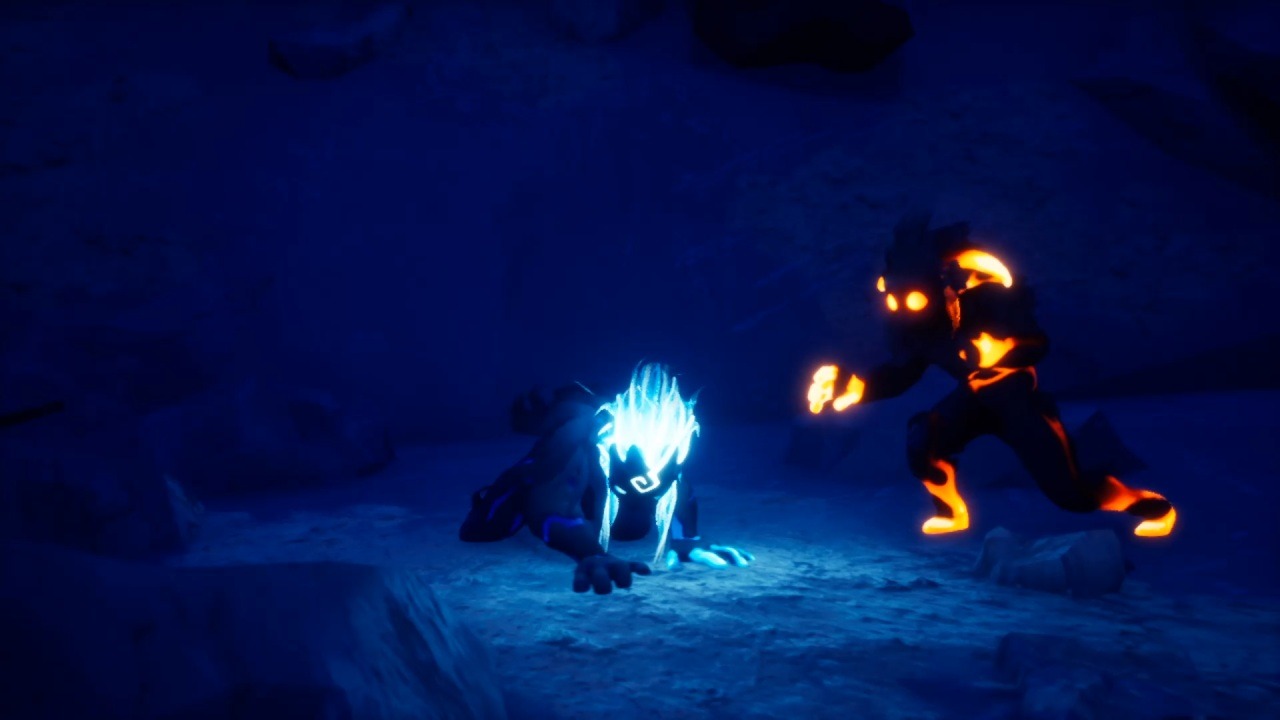
You encounter one of these bosses before they turn into a boss, and they’re just scared. They get scared and so they start to lash out and become corrupted by their fear. You then need to defeat them, but as soon as you’ve depleted their health, your character doesn’t finish them off in the cinematic that follows their defeat. Instead, you blow a hole in the wall and let the light inside. The light flashes into the darkness, and you stand there with your new friend as they come to their senses. Then you leave with them.
Every boss is like this. You’re not killing them as much as you are beating some sense into them. You get a distinct feeling while playing that fighting is not meant to be the best option and that you are instead there to help them all come to terms with their out-of-control emotions. The entire narrative is about these ideas. There is no dialogue whatsoever, so everything needs to be visually represented, and Strayed Lights does that very well.
Strayed Lights is a game that embraces a more streamlined and universalized form of narrative exposition by ditching dialogue and instead showing gestures and expressions to portray what needs to be shown. The fact that regular enemies don’t come back either also feels like it’s part of this whole narrative as you’re purging this place of its negativity. Most games do not focus on emotions other than anger, so it’s great to see Strayed Lights do it so well.

In addition to this, because of the wider spaces and the movement through one area to a boss that has some kind of a tragic reality behind them, Strayed Lights is perhaps comparable to something like Shadow of the Colossus. The gameplay is entirely different, and there is regular combat until you face each boss, but the comparison may still be an apt one to make.
Another interesting aspect that could also be compared to Shadow of the Colossus is that the protagonist in Strayed Lights changes over the course of their story in this world. As you defeat bosses, your body changes and grows. It’s a very interesting aspect of this narrative, and it’s all aided by a beautiful and often subtle soundtrack by the musician behind Journey and Abzû. It’s a beautiful backdrop to the narrative that this game is presenting.
Not all good things last forever though, and it’s now time for some of the biggest problems that Strayed Lights has. The game is an indie, and so that needs to be remembered, but that does not excuse the many small technical issues that the game has. There are visual and audio stutters, framerate drops, and there was even one crash to desktop, although this never occurred a second time. Reducing the graphical quality of the game also does not improve its performance. So, there are definitely some optimization issues that the developers need to sort out, but that can hopefully come with some additional updates after the game launches. And one of the pre-launch updates already improved stability to some degree, so this hopefully means that the developers are taking these technical issues seriously and implementing some changes.
These are not the only issues though. The enemy AI can sometimes bug out and start attacking nothing, sometimes enemies get stuck in level geometry, and there was also one very irritating glitch in which the game deducted double the number of upgrade points than it was meant to deduct, and those upgrade points never came back. This meant that an entire upgrade was simply lost forever because those points were gone. This is also something that needs to be fixed.
These have all been technical issues that can be fixed though, but Strayed Lights isn’t off the hook just yet. The last area of the game is a problem too. The ending will not be spoiled, but the last area will now receive the criticism it must receive. It entails a massive difficulty spike as you get thrown up against pairs of enemies that are seemingly paired up to be the absolute worst combinations of enemies for you to face. In addition, the game throws a new mechanic at you in the last thirty minutes of the game. It’s not entirely new but getting tutorialized on something so far into a game is not a great idea.
Regardless of that criticism and the technical issues, which will hopefully be fixed, Strayed Lights is still a fantastic game that deserves a whole lot of love, and the positives of the experience massively outweigh the negatives. It isn’t all that long at about 5-6 hours, but it’s exactly as long as it needs to be. So, check out Strayed Lights if you want a not-too-tough soulslike game that also happens to do a few new things along the way.
Contributor, NoobFeed
Verdict
Strayed Lights is still a fantastic game that deserves a whole lot of love, and the positives of the experience massively outweigh the negatives.
90
Related News
No Data.

